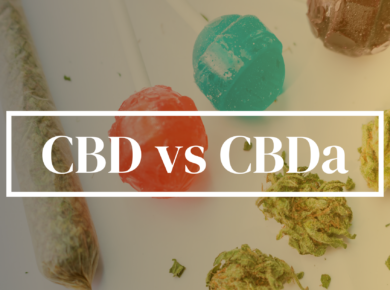Growing industrial hemp
Hemp is a dynamic crop that is easy to grow, maintain, and harvest. It also has a multitude of uses from medicinal to manufacturing. Here is a step-by-step guide to help you begin growing hemp seeds.

What You’ll Need
- Planting Supplies
- Hemp Seeds
- Water Source
- Well Draining Soil (ph6-7.5)
- Garden Shovel (for moving soil)
- Garden Hoe (for moving soil)
Harvesting Supplies
- 1 Tarp
- 2 5 Gallon Buckets
- 1 scythe or garden shears/snips
- 1 Stick, Club, or Bat
- Refrigerator
Getting Started
First, we want to check the condition of the soil where you will be planting your hemp seeds. A simple soil test is quick and easy. Start by going to your local hardware store and purchasing a soil test kit. There are a number of kits on the market, so choose the one that fits you best. I like using Land Grant Labs. They provide a print out of the results, and recommendations on how to correct or solve a soil issue. Your local agricultural center can also provide means for soil testing.
Find quality hemp seeds on Kush Marketplace now >>
Sending in a soil sample before sowing your hemp seeds is very important. Kush recommends doing a few soil tests from different labs. This will help you to have a broader idea of what is going in the soil, but one test will do the job to get started.

Soil Fact: Hemp typically prefers a soil with a ph of 6 to 7.5.
Prepping the soil
Once the results of your soil test are returned, take any recommended actions. Supplement your soil with the recommended minerals to ensure that the plants will have all the nutrients they need for the season. Another way to insure a proper mineral composition is to plant a cover crop the previous season.
Like growing any crop sustainably for the long term you must feed the soil and not the plant. Hemp is no exception to using proper crop rotation methods, such as:
Year 1: Hemp (planted for harvest)
Year 2: Common Buckwheat (planted for soil phosphorus regeneration)
Year 3: Hemp (planted for harvest)
Year 4: Alfalfa (Planted for soil nitrogen regeneration)
Following this cycle of crop rotation will make for better, healthier, dynamic soil. By design, it also leads to a better, healthier, dynamic hemp product for generations to come.
If the soil is healthy and vibrant, anything it grows will also be healthy and vibrant. My favorite cover crop is Common Buckwheat. It’s inexpensive, covers a lot of ground, smothers out common weeds, works well in poor soils, and is better than other cover crops at retrieving phosphorous. Additionally, buckwheat helps later crops with fruiting, flowering, and root growth.
If you don’t the time to plant a cover crop this season then simple supplementation from your local agriculture supply store can be a quick and effective way to ensure you have organic mineral content in time for the current season.
Find feminized hemp seeds in bulk on Kush Marketplace now >>

Sowing Seeds
Planting Hemp seeds from April-June is advised, although conditions are more important than the calendar date. A soil temperature above 50°F, in Full-Sun (6-8 hours of sunlight a day), and well drained soil is ideal. Upon planting, follow with a deep watering to promote germination. You should be able to see seed-sprouts emerge anywhere between 5-10 days although some seeds can take as long as two weeks.
Hemp seeds should be deeply water once a week, early in the morning, or at dusk to prevent evaporation. Watering is most important between the first 6 weeks, after this, hemp becomes mostly drought tolerant.
Find quality hemp seeds on Kush Marketplace now >>
If you starting seeds inside, it is recommended to do so around May 1st. This allows 3 weeks of growth before transplanting outside. Seedlings should be lightly watered each day and stored in a warm (above 70°F) room with 6-8 hours of direct to indirect sunlight. When the stems near the base begin to become “woody” and more stable, the seeds are ready to make the move outdoors.
In some hemp fields, seed spacing is commonly 4’x6’, due to how big the plant will be at full maturity. This additional space also gives room to harvest material from the plant. Similar to an orange grove or apple orchard, all hemp plants have their own space. This is more convenient for the farmer, due to the creation of rows to walk, room between plants for inspection, and easier movement at harvest time. This is not necessary, but keeps the field orderly and manageable.
However, hemp can be planted very densley with no issues as well. Not only will this help keep weeds at bay, but it will provide more harvest potential. Another benefit is that the hemp crops do not need to be inspected as frequently due to the sheer quantity.
Either method of planting your hemp crops is acceptable.
Growing Hemp: Frequently Asked Questions About Planting Hemp Seeds
What is the ideal soil temperature for planting hemp seeds?
Hemp seeds should be planted in soil as close to 50°F as possible.
What level of sun is needed for hemp seeds?
Hemp should be planted in full sun.
When is the best time of year to plan hemp seeds?
Ideally, you should plan to plant your seeds from April-June.
How many days does it take for hemp seeds to emerge?
On average, it takes about 5-10 days for hemp seeds to begin to emerge from the soil.
What is the proper seed depth for hemp?
Hemp seeds should be planted ¼” to ½” deep into the soil.
What is the proper row spacing for hemp plants?
Hemp should have at least 4” between each seed when planting.
When do hemp plants reach maturity?
On average, hemp reaches maturity between 8-16 weeks (based on species).
When should you sow hemp seeds?
2 to 4 weeks after your average last freeze when soil temp is above 46F, or anytime up to 4 weeks

Find hemp seeds on Kush Marketplace now >>
How to Harvest Hemp
Hemp can be harvested for fiber or seeds.
As soon as seeds develop (after 4-8 weeks) fiber can be harvested. The longer you wait to harvest the stalk for fiber, the more durable the fiber will be. You can begin harvesting hemp fiber as early as seeds are visible.
To harvest hemp fiber
- Cut stalks 2-3 cm from the soil using shears or a scythe
- Lay the stalks on the ground to dry, also called “retting.” This process allows moisture and microbes to break down the stalk so that fiber is easier to remove. “Retting” can also be done by submerging the stalks in water for up to 7-10 days. Retting will not occur under 41°F or above 104°F. This process can take up to 5 weeks.
- Allow to dry completely before storing
- Once dried hemp can be bound in stacks, bales, or bundles for storage
- Hold cutting over a tarp or collection bin in a well ventilated area
- Thrash the clipping with a stick, club, or bat to kock all the seeds off onto the tarp/bin
- After harvesting each plant as a whole you will pour the seeds into a 5 gallon bucket
For seed harvest, wait 12-16 weeks until you see seeds forming at the top of the crop. Some seeds lower on the plant may be harder, where as some closer to the top may be soft and green. This is normal and means your plant is not quite ready for seed harvest. For maximum harvest wait until the majority of the seeds are hard.
Sell your hemp seeds or other hemp products on Kush Marketplace now >>
How to Get seeds from your hemp crop:
- Cleanly cut just below the lowest seed pod off the stalk with shears/snips or scythe.
- Hold cutting over a tarp or collection bin in a well ventilated area.
- Thrash the clipping with a stick, club, or bat to kock all the seeds off onto the tarp/bin.
- After harvesting each plant as a whole you will pour the seeds into a 5 gallon bucket.
- Hold a bucket one foot above another bucket and pour the seeds back and forth. When the seeds are poured from one bucket into the next, the wind (or a fan) moving between will blow away all the residue and debris. Repeat this step 5-10 times until all debris and residue has been removed. This process is called “winnowing.”
- You can now pour seeds into a refrigerator safe bin with a lid and store between 32-40°F.
Once the seeds are harvested, you can harvest the fiber from the fully matured stalk as well. Fully utilizing the crop to its maximum potential by repeating the steps for “fiber harvesting”, listed above.
[contact-form-7 id=”7833″ title=”Hemp Raw Material Quote”]




